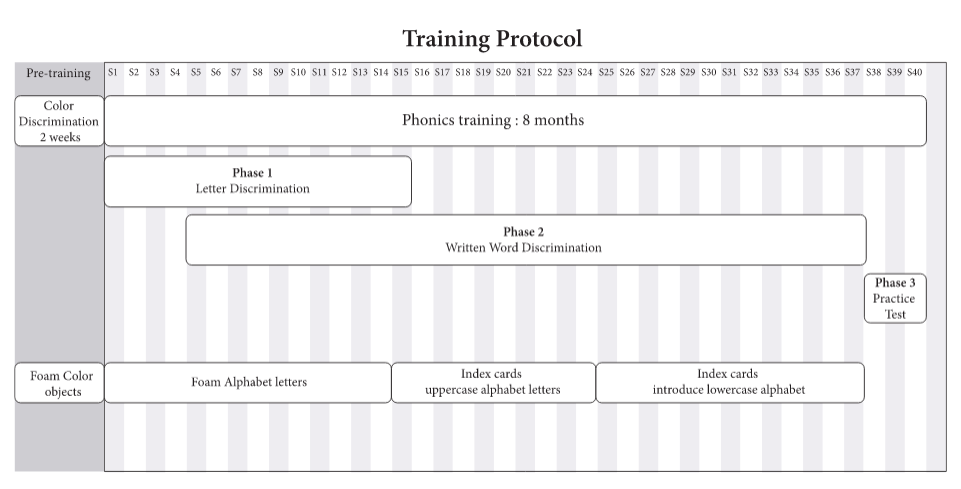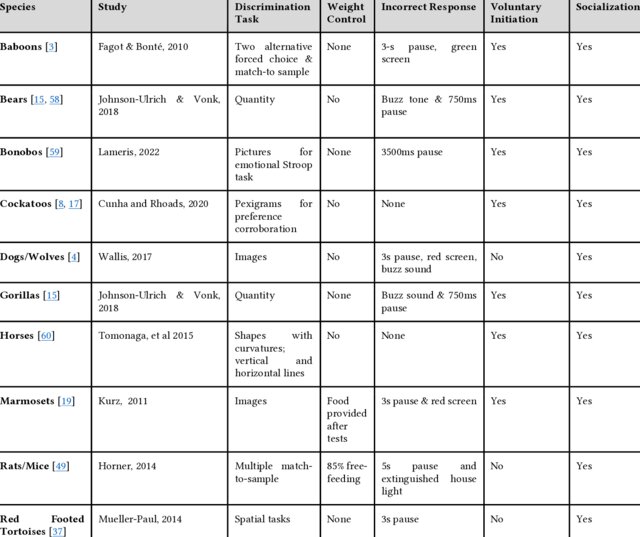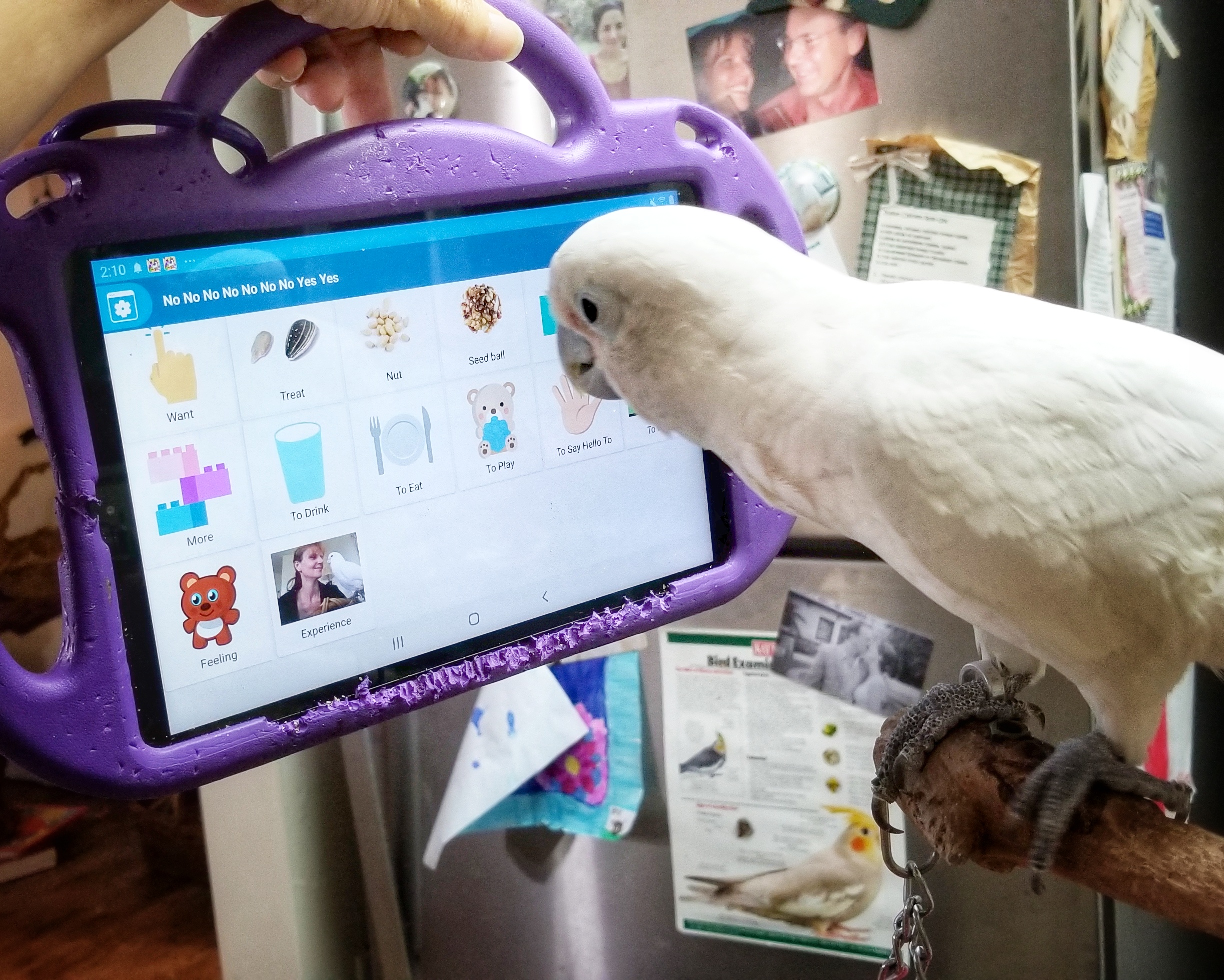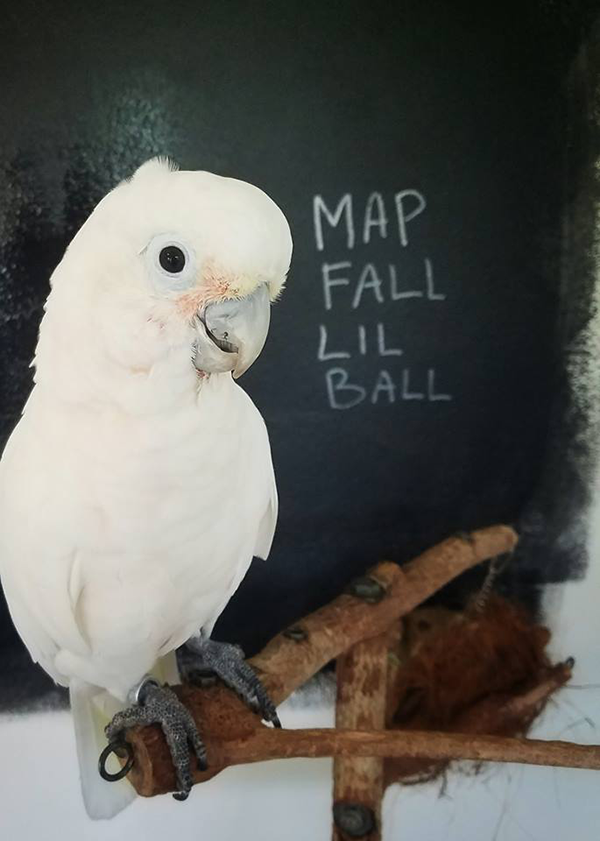(Published)
Reading Comprehension Skills in a Goffin’s Cockatoo
(Cacatua goffiniana)
Cunha, J., Rhoads, C., & Clubb, S. 2020. Reading Comprehension Skills in a Goffin’s Cockatoo (Cacatua goffiniana). ExoticsCon 2020 Proceedings, Denver, CO: Association of Avian Veterinarians.
Abstract: Reading is a complex cognitive process of decoding symbols to derive meaning. Although it has been assumed to be a uniquely-human skill, there is evidence that other species, such as pigeons and baboons, can master some orthographic processing skills—discriminating written words from written nonword letter combinations. An Umbrella cockatoo has also demonstrated the ability to learn phonics.
Here we ask whether a cockatoo can silently read a written word, correlate it with a picture, and access it as a vocabulary word when verbally prompted, utilizing processes known as Sidman’s Stimulus Equivalence and phonological recoding—learning vocabulary through reading.
In this blind reading comprehension test, cards were created with a picture on the top left and a word on the bottom right that could be covered with a flap. The cockatoo was first prompted to 1) silently read the novel-impression word on the bottom right (i.e., hamster) when the flap was up and it was uncovered; 2) touch the corresponding picture (i.e., hamster) on the top left to correlate the picture with the matching word label; 3) repeat this process with a second word/picture combination (i.e., otter); and 4) once the words were hidden with the flap, select the accurate card out of two options (i.e., hamster and otter) based on verbal prompt (“Which one is the hamster?”)
The cockatoo’s accuracy (M=90%) was higher than chance. These results indicate that cockatoos may have the ability to engage in reading comprehension tasks, one of the processes required for literacy.




